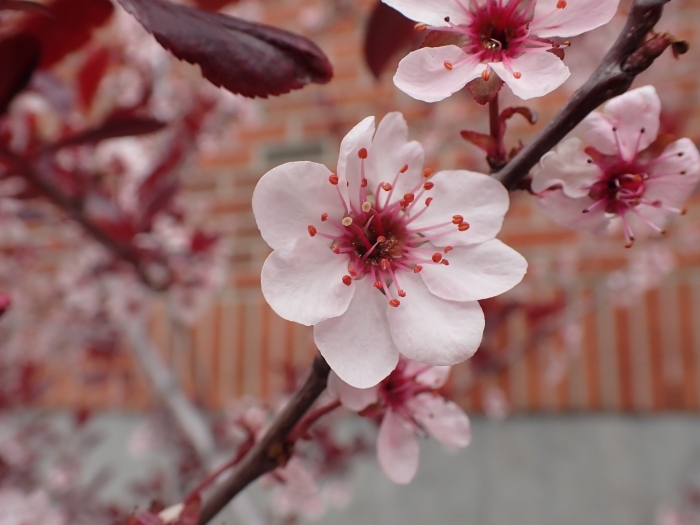Purple Leaf Sand Cherry
(Prunus ×cistena)
Purple Leaf Sand Cherry (Prunus ×cistena)
/
/

© Matt Lavin
CC BY 4.0
Image By:
© Matt Lavin
Recorded By:
Copyright:
CC BY 4.0
Copyright Notice:
Photo by: © Matt Lavin | License Type: CC BY 4.0 | License URL: http://creativecommons.org/licenses/by/4.0/ | Uploader: mattlavin | Publisher: iNaturalist |


























Estimated Native Range
Summary
Prunus ×cistena, commonly known as Purple Leaf Sand Cherry or Dwarf Red-Leaf Plum, is a deciduous shrub or small tree, an artificial hybrid between Prunus cerasifera and Prunus pumila. It thrives in a range of habitats including open woodlands and forest edges, primarily in the temperate regions of North America. This plant typically grows to a height of 5 to 8 feet and has a lifespan of 10 to 20 years. The Purple Leaf Sand Cherry is notable for its reddish-purple leaves and small, fragrant pink to white flowers that bloom in spring, adding ornamental value to gardens. It produces small, dark purple fruits that are edible and can be used in jams or preserves, although the pits are toxic and should not be consumed.
The Purple Leaf Sand Cherry is valued for its compact size, making it suitable for urban gardens, borders, and as a specimen plant. It is frost-tolerant and can survive in hardiness up to USDA Zone 2a. This plant prefers full sun to part shade and requires well-drained soil. While it is relatively low-maintenance, it can be susceptible to pests such as aphids and diseases like leaf spot and canker. Pruning is recommended to maintain its shape and promote healthy growth. Its drought tolerance and ability to adapt to various soil conditions make it a versatile choice for gardeners.CC BY-SA 4.0
The Purple Leaf Sand Cherry is valued for its compact size, making it suitable for urban gardens, borders, and as a specimen plant. It is frost-tolerant and can survive in hardiness up to USDA Zone 2a. This plant prefers full sun to part shade and requires well-drained soil. While it is relatively low-maintenance, it can be susceptible to pests such as aphids and diseases like leaf spot and canker. Pruning is recommended to maintain its shape and promote healthy growth. Its drought tolerance and ability to adapt to various soil conditions make it a versatile choice for gardeners.CC BY-SA 4.0
Plant Description
- Plant Type: Shrub, Tree
- Height: 6-10 feet
- Width: 5-8 feet
- Growth Rate: Moderate
- Flower Color: Pink
- Flowering Season: Spring
- Leaf Retention: Deciduous
Growth Requirements
- Sun: Full Sun
- Water: Medium
- Drainage: Fast, Medium
Common Uses
Border Plant, Hedges, Low Maintenance, Showy Flowers
Natural Habitat
Open woodlands and forest edges, with a lifespan of 10 to 20 years, and susceptibility to pests and diseases
Other Names
Common Names: Dwarf Red-Leaf Plum
Scientific Names: Prunus ×cistena , Prunus hybr f. unranked , Prunus ×cistena
GBIF Accepted Name: